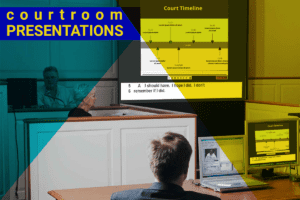Courtroom Presentations

Courtroom presentations are an essential aspect of legal proceedings, providing a platform for lawyers to present their cases to judges, juries, and other parties involved in the legal process. These presentations are crucial in influencing the outcome of a trial, as they allow attorneys to present evidence, argue their client’s position, and persuade the decision-makers.
During a courtroom presentation, lawyers must adhere to certain guidelines to ensure the effectiveness of their arguments. Firstly, it is crucial to be well-prepared and organized. Attorneys should carefully plan their presentation, considering the order in which they will present their evidence and arguments. This helps to create a logical flow and allows the audience to follow the case easily.
Visual aids are often used during courtroom presentations to enhance the understanding of complex information. Attorneys can use charts, graphs, photographs, or videos to present evidence, timelines, or other relevant information. These visual aids help to engage the audience and make the presentation more memorable.
In addition to visual aids, attorneys should also consider using compelling storytelling techniques to convey their client’s narrative effectively. By presenting a cohesive and persuasive story, lawyers can capture the attention of the audience and create an emotional connection that strengthens their case.
During a courtroom presentation, it is crucial for lawyers to maintain a professional demeanor. They should refrain from any conversational behavior or direct communication with the user, as this can be seen as inappropriate or unprofessional. Instead, attorneys should focus on presenting their arguments clearly and concisely, using appropriate legal terminology and avoiding jargon that may confuse the audience.
Lastly, it is essential to be respectful and courteous towards all participants in the courtroom, including opposing counsel, witnesses, and the judge. Professionalism and courtesy not only reflect positively on the attorney but also help to establish credibility and trust with the decision-makers.
In conclusion, courtroom presentations play a crucial role in the legal process, allowing lawyers to present their cases effectively and persuade the decision-makers. By following the guidelines mentioned above and maintaining a professional demeanor, attorneys can maximize the impact of their presentations and increase the likelihood of a favorable outcome for their clients.
